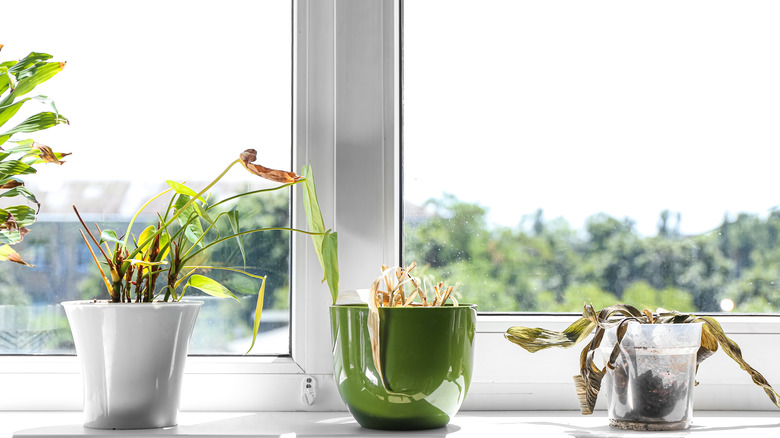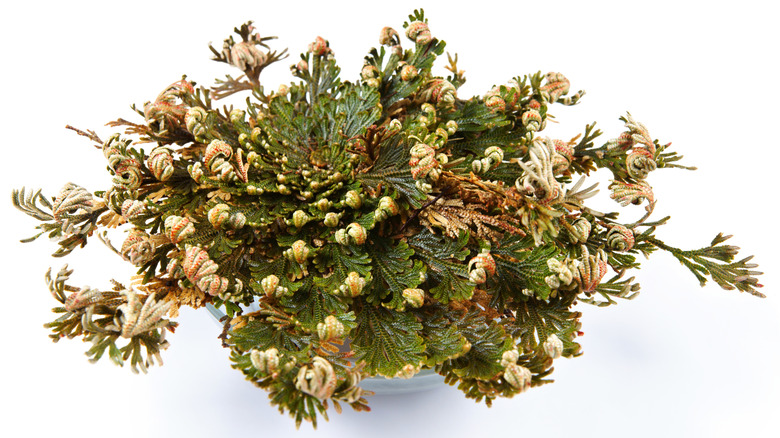The Fail-Proof Houseplant That Thrives On Neglect
While budding plant enthusiasts may fill their Pinterest board with images of homes teeming with lush houseplants in every corner, many people may not fulfill their green dreams out of fear of neglecting their plants. Whether dealing with a jam-packed schedule and countless responsibilities or prone to forgetfulness when it comes to the consistent care of plants, it's easy to get discouraged by watering mistakes that kill your potted plants or stressed out by high-maintenance houseplants that add more complications to your life instead of ease. Thankfully, there are some plants that are hardy enough to withstand even the most neglectful owner.
Take the resurrection plant (Selaginella lepidophylla), an infamous type of spike moss known for its ability to seemingly "rise from the dead," transforming from a dry tumbleweed into a green, dense mass defined by fern-like fronds. Native to the Chihuahuan Desert, which encompasses areas in northern Mexico and the southwestern United States, this spike moss plant can survive for months (even years) without water. By going dormant and curling into a brittle ball, the plant is able to conserve water during periods of drought and extreme heat. Once rehydrated, the plant unfurls to its previous green state, a signal that it has continued its photosynthesis process.
There are around 240 species classified as resurrection plants. For example, there is another plant, commonly called the true rose of Jericho (Anastatica hierochuntica), that looks identical to the S. lepidophylla. The major difference is that the true rose of Jericho is native to western Asia and can only be revived if its roots are placed in soil. In contrast, the resurrection plant known as the false rose of Jericho, is a popular choice for those seeking a low-maintenance indoor plant off the beaten track.
Taking care of your resurrection plant
Often sold in its desiccated state, the resurrection plant doesn't require much to thrive. Unlike the true rose of Jericho, the false rose of Jericho can be revived without being planted in soil. In order to jump-start the hydration process, you'll need a bowl and pebbles plus a location that receives bright, indirect sunlight – ideally in a place where you won't miss its transformation. After filling the bowl with a layer of pebbles (which helps keep the roots from rotting) and distilled water (since the plant is sensitive to water quality), add the dormant plant to the top. Its roots should touch the water, but avoid completely submerging the plant. Within a few hours, the tight, dry ball will start to unfurl. Once out of dormancy, misting the plant every other day or so will help maintain hydration and humidity. Also, it's important to change the water in the bowl daily, preferably in the morning.
From there, the plant will take a few additional days to reach its full green splendor. If any stems are brown, feel free to prune them away. However, if your plant does not revive after a week, unfortunately, it is probably already dead. And while resurrection plants appreciate hydration, it's best to occasionally remove the plant from the water bowl in order to avoid mildew or rot. Ideally, the plant should take a rest from sitting in water at least once a week. It is also recommended that you allow the plant to completely dry out once every month. This will ensure the longevity of your plant.

